The human body is a wonderful thing. When a thing is not quite correct, it has simple methods of making you recognize the issues. It can do this through a range of parts – one particular of which is your feet!
Understanding and realizing what your feet are wanting to point out about your health and well being can assist you to become more in tune with your entire body, and deal with any problems.
Here are 12 warning signs your feet might be giving you to let you know that something is off.
1. Hairless Feet
If your feet are smooth with absolutely zero hair, you might think you’ve won the beauty lottery. But actually, that can be a sign of serious circulation problems.
It’s usually caused by a cardiovascular disease
like arteriosclerosis; when your arteries become hardened, making your heart work harder to pump blood throughout your body.
Your heart goes into recovery mode and prioritizes certain vital areas of your body, sending reduced blood to extremities like your feet.
2. Sunken-in Toenails
Are your toes slightly sunken, with a bit of a spoon shape? This happens when your body doesn’t have enough iron – a condition known as anemia.
And considering that anemia is by far the most common blood disorder in the nation , a whole lot of you reading this have sunken toenails.
When left untreated anemia can make you feel tired, weak and short of breath. Iron deficiency can be easily solved by eating more red meat, seafood, dark green vegetables and dried fruit.
You can also take iron supplements.
3. Long-term Sores
A sore on your feet that won’t heal is a hallmark warning sign of diabetes.
You see, an elevated blood sugar level leads to nerve damage – particularly in your feet. Cuts and sores that your body would normally heal, stick around indefinitely. In extreme cases, this can lead to severe infection in which amputation is necessary.
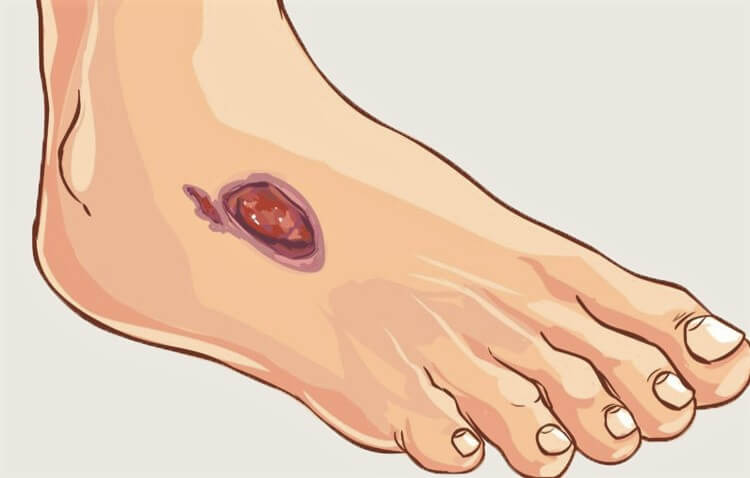
4. Cold Feet
Look, we’re all a little hesitant from time to time. But if you’ve got actual, literal cold feet for no apparent reason, that’s a serious problem.
It could be a sign that your thyroid – the gland responsible for warming your body – is malfunctioning by producing too much homocysteine. Excess homocysteine can also cause heart disease, poor circulation and stiffness.
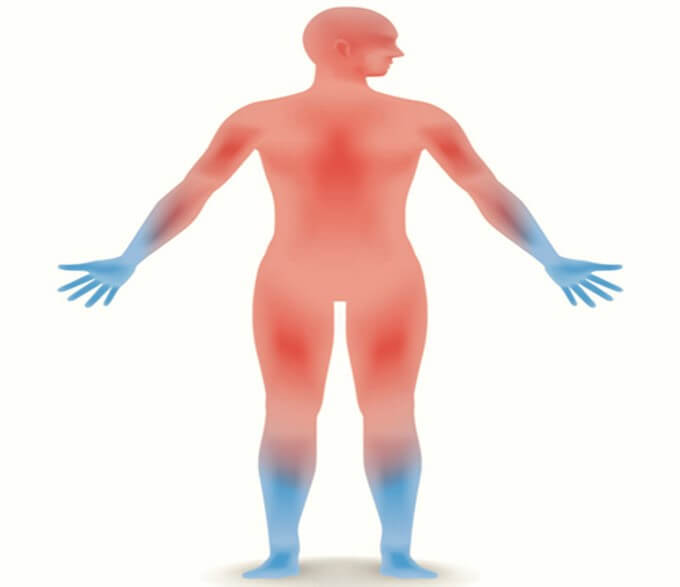
5. Yellow Toenails
Thick, yellow toenails are most often the handiwork (pun wholly intended) of a fungal infection.
You could have gotten said infection from a number of sources; culprits tend to include non-breathable shoes, public swimming pools and improper drying of your toes when they get wet.
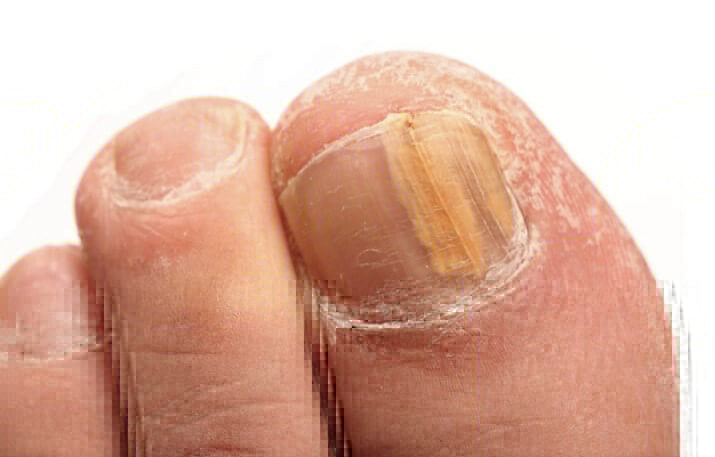
6. Heel Pain
Do you notice sharp, shooting pains in your heel – especially when you stand up? Ah, you’ve met plantar fasciitis.
It’s a common foot condition in which the plantar fascia ligament in your foot becomes irregularly stretched. The ligament develops small tears and inflammation.
What causes plantar fasciitis? Repetitive strain and improper shoes are the most common culprits.
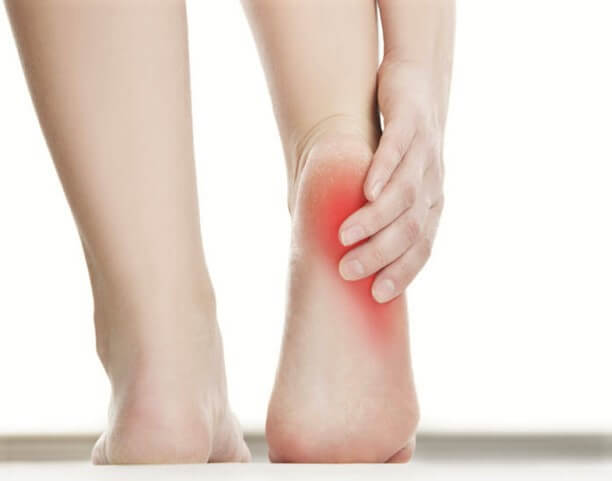
See also: 5 Signs of Nutrient Deficiencies That Are Written All Over Your Face
7. Numbness
Remember that pesky nerve damage I mentioned a few points ago? It’s back! This time, in the form of numbness.
Diabetes causes what’s known as neuropathy – numbness and loss of feeling in the extremities. Roughly 60-70% of all people with diabetes will experience neuropathy. It usually pops up after about 25 years of poorly-managed diabetes.
If that sounds like you, check in with your doctor to see what you can do to improve your diabetes treatment.
8. Sore Foot Joints
Rheumatoid arthritis is an inflammatory disorder in which your immune system makes the mistake of attacking normal tissue.
As a result, the lining of your joints becomes sore. Painful swelling soon follows.
If this sounds familiar, you’ll definitely want to get your joints checked out as soon as possible. Left untreated, rheumatoid arthritis can cause bone erosion and deformity.
9. Flaky Feet
When you’ve got flakes falling off your body, it’s never a good thing.
Flaky feet – especially if the flakes originate from between your toes – can be a sign of athlete’s foot.
It’s a very common (and contagious) fungal infection caused by tinea bacteria. Walking barefoot in public locker rooms or sharing sneakers can cause the infection.
Athlete’s foot usually can be eradicated easily with anti-fungal creams but if you’ve also got diabetes or a weak immune system, it’s recommended that you see your doctor.
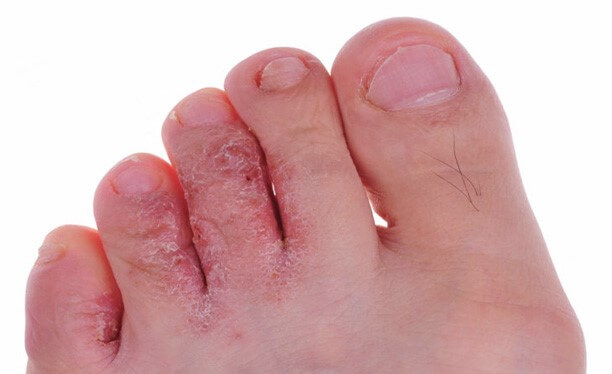
10. Digital Clubbing
No, it’s not a sort of virtual reality Friday night out for shy folk. Digital clubbing is not fun at all.
It’s a condition that leads to a change in shape in your toes. It can involve one, a few or all of your toes. The most common cause of digital clubbing is lung cancer. Other causes include pulmonary fibrosis, a heart defect and brochiectasis.
No matter what you suspect the cause of your digital clubbing to be, you’ll definitely want to have it checked out by a doctor.
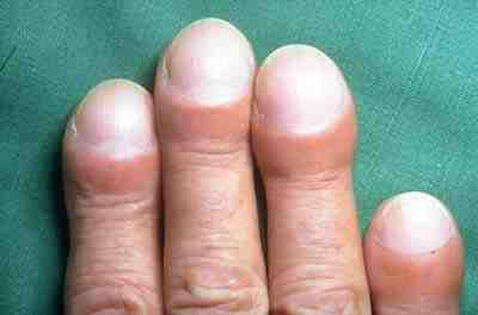
11. Toes That Turn Colors
At first, you might think it’s a cool party trick. But it gets old pretty quickly, especially when you realize it’s a prime feature of Raynaud’s disease.
If you’ve got Raynaud’s disease, the change in color will be linked to temperature. When your feet begin to feel cold, your toes will turn white or blue. It will take about 15 minutes for your toes to return to normal color after warming.
It’s caused by abnormal blood vessels in the toes that become narrow in response to cold or stress. It’s not a life threatening disease and can be managed with a physician’s help.
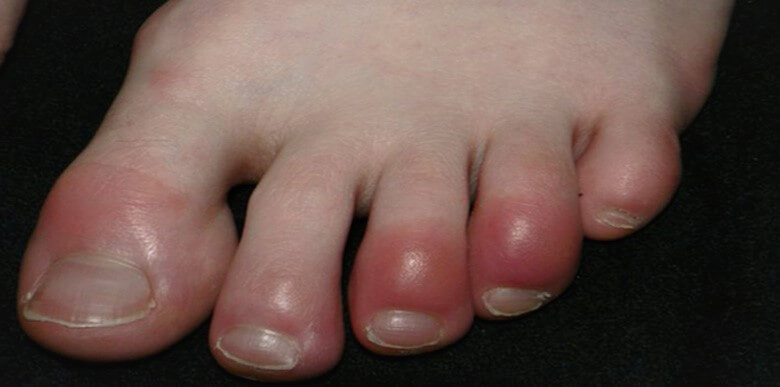
12. Pitted Toenails
If your toenails have more holes than an episode of CSI, you may have a condition known as psoriatic arthritis. It most commonly affects those with psoriasis – a disease causing scaly, red skin.
The toenail abnormality can pop up even before skin damage and may also occur on the fingernails.
Without treatment, psoriatic arthritis can become disabling.
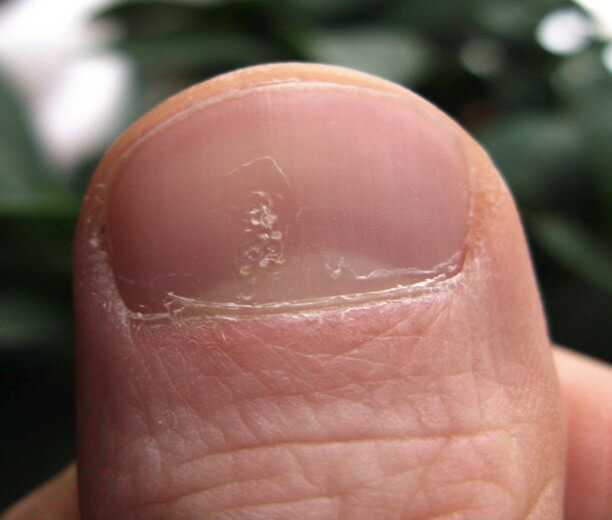
Read also: This Is What The Half Moon Shape On Your Nails Mean
 Freshsein
Freshsein